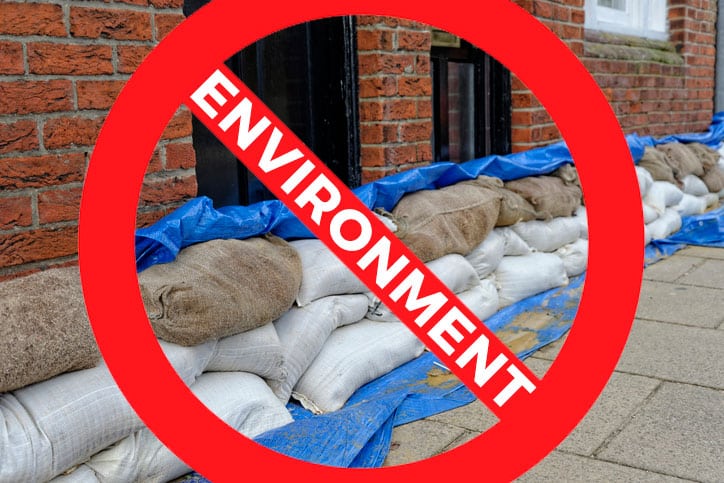There are plenty of reasons why inflatable cofferdams are better for the environment than sandbags. For a start, inflatable cofferdams have only the tiniest impact on the local environment when used for water diversion, containment, or flood protection. No matter the application, inflatable cofferdams can easily be removed once used, unlike sandbags which take careful logistical planning and hours of back-breaking labor to dispose of safely. In addition, with inflatable cofferdams, noise pollution and the entry of contaminants into the water flow is much less of a problem.
The Use of Inflatable Cofferdams in All Types of Projects Causes Much Less Disturbance
When you use inflatable cofferdams to solve any water-related problem, there is no penetration of the subsurface required as you would need when driving sheet piles into the ground. In addition, nothing gets left behind. With sheet piling, the lower sections of the piles often break and are left behind once the project has been completed, creating long-lasting disturbances.
Also, significant turbidity levels are created during sheet piling installation as the piles themselves are driven deep beneath the subsurface. By contrast, installing inflatable cofferdams creates zero turbidity as the cofferdams are placed upon the subsurface, and no penetration is required.
The sheet piling installation requires heavy machines, including some powered by hydraulic fluids. This always runs the risk of the rupturing of hydraulic fluid lines, which will cause those fluids to pollute the waterway. No hydraulic fluids are required to complete the installation of an inflatable cofferdam.
Earthen dams, custom contractor methods, and the installation of sandbags are no better when it comes to turbidity. All also run the risk of introducing foreign elements, materials, and chemicals into the waterway, increasing levels of pollution. The removal of such pollutants from the water when projects are completed is costly and time-consuming.
Sandbags are an Environmental Hazard, and Their Use Needs to be Minimized
Sandbags come under the category of single-time use. When they come into contact with water, they will slowly become sodden even though they resist that water’s impact and pressure. There is very little value in allowing the sand within the bags to dry out once the sandbags have been used; the sand is likely to have become contaminated with pollutants, rendering it unsafe. This is why environmental laws are in place to ensure that sandbags are disposed of safely. Sandbags are seldom, if ever, fit to be reused. This adds to the global trash disposal problem, with most sandbags going to landfill sites.
By contrast, when an inflatable cofferdam is complete, it can be deflated by releasing the water from it and then pumping out whatever water remains. After that, the cofferdam can be cleaned, rolled up, transported away, and stored. If looked after carefully, a water-inflated cofferdam can be used several times over, increasing its effectiveness and environmental-friendliness.
Suppose you have a water intrusion-related problem and want to resolve it with as little impact on the environment. In that case, water-inflated cofferdams are the solution you have been seeking. If you would like to learn more, please feel free to contact the cofferdam experts at Dam-It-Dams. We have been supplying cofferdams to multiple industries for over twenty years, and we will be able to help you. You can call us anytime at (810) 695-1695 or contact us online using our contact form.


